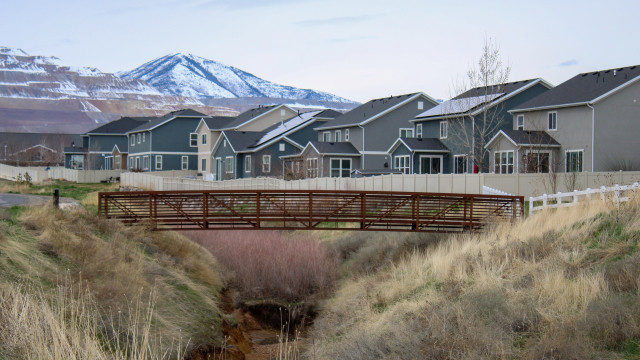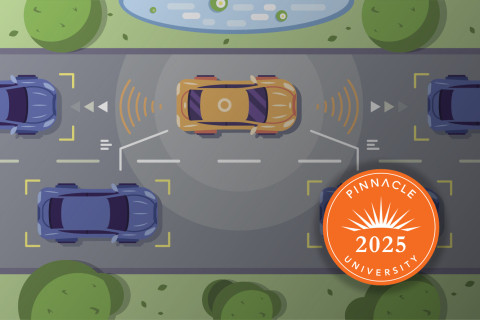
Captives for HOAs? New Utah Regulation Allows the Alternative Risk Transfer Solution to Extend into Personal Lines
As carriers stop offering homeowners insurance policies in particular locations, captives are a way to provide needed risk transfer.
One day, a homeowner might feel good knowing their property is insured against anything that could happen.
But that can change in an instant. Massive rate increases, non-renewal notices and a decline to offer new coverage in particular geographies are becoming the norm in many parts of the country as insurers try to remain financially viable amidst shifting climate risks.
It’s a particular problem in the western United States, where states like California, Utah and Nevada have to contend with brutal wildfire seasons and the losses of high-value homes. Homeowners in the southeast, particularly Florida, face similar concerns as hurricane risk drives coverage availability and affordability problems.
“If a wildfire were to sweep through a neighborhood of multimillion-dollar homes, the damage could easily reach hundreds of millions of dollars,” said Greg Fears Jr., director and consulting actuary, Pinnacle Actuarial Resources.
As homeowners’ insurance carriers across the country pull out of regions with significant catastrophe risk, Utah is piloting an innovative solution: allowing Homeowners Associations (HOAs) to form their own captives to offer homeowners insurance policies to their members.
How Frustrated Homeowners Brought Personal Lines Captives to Utah
The amendments to Utah’s captive legislation came after homeowners and HOAs expressed frustration at not being able to find insurance coverage. Historically, domiciles have only made captives available to commercial insureds.
“This represents a significant shift in the captive insurance space, as most domiciles have traditionally prohibited captives from operating in the personal lines market,” Fears said.
Under the amended regulations, HOAs can establish an association captive to provide homeowners insurance policies to their members.
Each HOA will be able to determine if all of its members are required to participate or if some can opt-out of the program. HOAs should have no issue bolstering membership, however. They often have meetings where they can tell association members about captives and their advantages.
The approach can be used to offer coverage in areas where insurers have withdrawn or to fill gaps created by policy exclusions. HOAs will also be able to access reinsurance markets through their captives, opening up that market to their members as well.
“It’s an exciting new business area with significant potential for growth and innovation in the reinsurance sector,” Fears said.
HOAs are uniquely positioned to run an association captive program for personal lines insurance. Many of them already set guidelines for how members must maintain their homes and what vegetation they can and cannot have. These are valuable tools in making properties resilient against natural disasters.
“HOAs can require homeowners to take specific risk mitigation measures,” Fears said.
“By leveraging these assessments, HOAs can ensure that all participants in the captive insurance program adhere to the necessary risk mitigation measures, ultimately reducing the overall risk exposure for the community.”
Utah may be the first state to amend their regulations, but that doesn’t mean these captives are limited to the state. HOAs located anywhere across the country can domicile their captive in Utah, subject to state laws and banking requirements.
If the experiment proves successful, other states will likely amend their regulations to allow for similar systems — especially since natural catastrophes and dwindling homeowners insurance policies are a national problem. Florida is contending with similar issues due to its hurricanes and sinkholes. Tornadoes, hailstorms and derechos have the potential to create the same kinds of problems for the Midwest.
“Coastal properties, in general, face heightened risks,” Fears said. “Assuming Utah’s approach proves successful in attracting captives, I expect this to become one of the most significant trends in the captive insurance market over the next year or so.”
The Best Practices for Personal Lines Captives
Utah’s law is still new, and the best practices for HOA sponsored captives are still evolving (The first HOA captive hasn’t launched yet). Still, there are a lot HOAs considering captives can learn from commercial insurance companies.
“The general approach is to follow the lead of traditional carriers while addressing the specific exclusions and risks that commercial policies often fail to cover,” Fears said.
For starters, HOAs will need to determine how much capital they need for their captive. To do that, they’ll need to assess the value of the homes in the program, determine any deductibles and complete a number of other calculations so that they know how much they need. At this stage, they’ll also want to assess how much reinsurance they think the program needs.
“Determining the appropriate amount of capital for a captive is crucial,” Fears said. “The captive must have enough funds to pay claims, which relies on homeowner participation and premium contributions.”
A significant amount of education will be needed for HOA captives to be successful, as “homeowners associations and individual homeowners are often new to the concept of captives, there is a significant educational component involved,” Fears said. Captive managers and consultants can help them learn what it takes to launch a captive and keep it stable in the long term.
“They are well-positioned to outline the necessary steps for forming a captive and obtaining the required licenses,” Fears said.
Finding the Right Captive Management Partners
Utah’s new regulations might be intriguing, but for this to be a viable risk financing? solution for homeowners’ policies HOAs will need to find the right partners to support their captive.
Strong captive managers, actuaries and other team members are critical to ensuring a captive’s success.
Pinnacle Actuarial Resources has a wealth of experience working both in the captives and in the homeowners’ insurance spaces. Its actuaries are well poised to help HOAs that are starting on the path of developing their captives.
Actuaries can assess past loss experience and help HOAs set appropriate reserves for their exposures. Pinnacle has already taken steps to establish itself as a leader in this new space. Shortly after Utah amended its regulations, Pinnacle published an article outlining what these changes could mean for the industry.
“It's clear that this topic has piqued the interest of many in the industry, as it represents a unique and innovative approach,” Fears said. “The volume of inquiries we’ve received since publishing our findings underscores the relevance and potential impact of this development.”
While these developments are intriguing for the captives space writ-large, the solutions will need some fine-tuning to help HOAs operate as effective captive owners. Pinnacle feels eager and able to help potential insureds explore these new opportunities.
“We are well-positioned to address these challenges, and I’m optimistic about the potential solutions on the horizon,” Fears said.
(published in Risk & Insurance)



